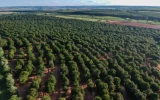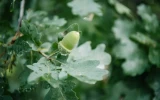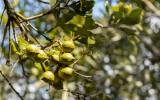When Do Macadamia Trees Flower?
One way to optimize Macadamia tree nut production is to fully understand the flowering patterns of macadamia trees. In this article, we will find out when exactly macadamia trees bloom and explore the factors that influence their time of flowering.
Generally, macadamia trees start to flower during the spring and early summer months, depending on the climate where they are grown. The exact timing can vary from year to year, influenced by local weather conditions and the specific species of macadamia.
The macadamia tree's ability to flower is influenced by several factors, including the soil quality, water, light, nutrients, rainfall, and the age of the tree. Let's find out how each of these factors can help your macadamia trees reach their full flowering potential.
Knowing details like expected flowering times is very useful for a new macadamia farm to schedule crucial activities like planting, pollination, and pest control.
Summary
- Macadamia tetraphylla is sensitive to changes in temperature and daylight hours, leading to a flowering season that typically occurs in late spring to early summer.
- Macadamia jansenii is less sensitive to temperature and climate changes, resulting in an earlier flowering season that extends from early spring to summer.
- The reproductive stage of macadamia trees occurs after 4 to 6 years, marked by the appearance of delicate and colorful flowers, signaling the beginning of nut production.
- The age of the macadamia tree affects its flowering set, with mature trees generally being more reliable in their flowering patterns and exhibiting increased flowering sets compared to younger trees.
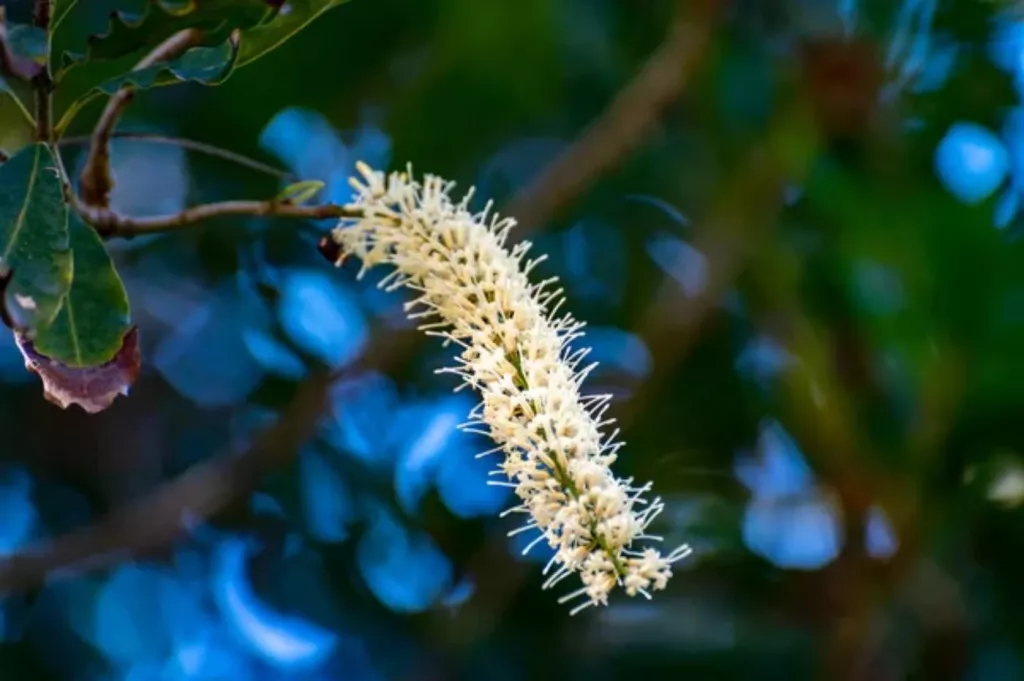
On this page:
Macadamia Trees Flower During Spring and Early Summer
Macadamia trees, known for their delicious and buttery nuts, typically begin to flower during the spring and early summer months. However, the exact timing of flowering can be influenced by various factors, including the climate and the specific species of macadamia being grown.
In regions with milder climates, macadamia trees may start to flower earlier in the spring, while in areas with warmer climates, the flowering season may extend into early summer.
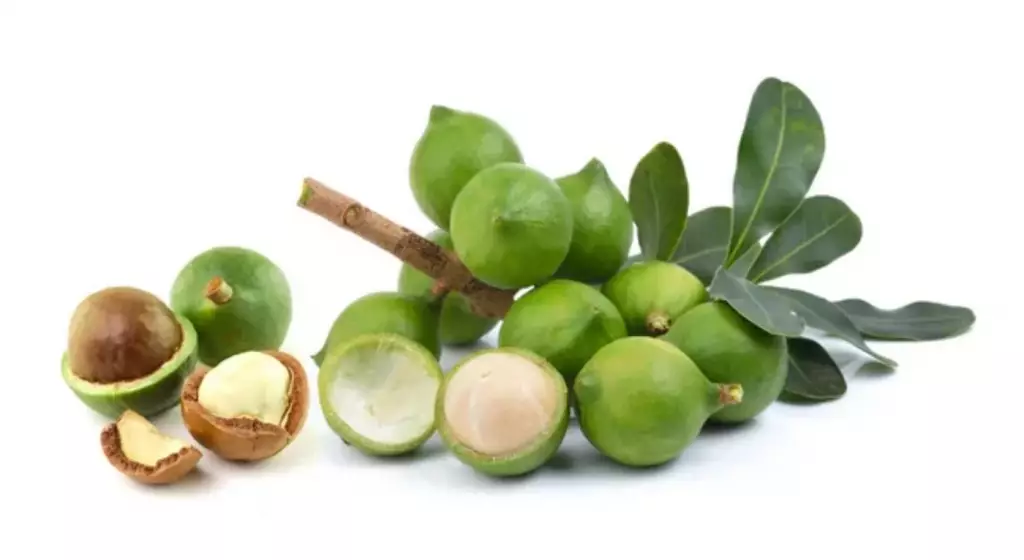
Local weather conditions, such as temperature and rainfall, also play a significant role in determining when the trees will bloom. Adequate moisture and sunlight also help promote healthy flowering in macadamia trees.
The specific species of macadamia being cultivated can also impact the timing of flowering. The table below shows the different species of Macadamia and their timing of flowering:
| Macadamia Species | Flowering Sensitivity | Flowering Season |
|---|---|---|
| Macadamia integrifolia | Moderate | Spring to early summer |
| Macadamia tetraphylla | Sensitive | Late spring to early summer |
| Macadamia jansenii | Less sensitive | Early spring to summer |
| Macadamia diversifolia | Moderate | Late spring to summer |
| Macadamia nuttingii | Sensitive | Spring to late summer |
Different species may have slightly different flowering patterns, with some varieties being more sensitive to changes in temperature and daylight hours. Additionally, certain species may have a longer or shorter flowering season than others.
If you want to find out more about the different macadamia species, you can check out this article for more detailed discussions.
It's worth noting that the timing of flowering can vary from year to year, even within the same location. Factors such as fluctuations in temperature and weather patterns can cause variations in the onset of flowering.
Growers and agricultural experts monitor these factors closely to anticipate the start of the flowering season and make appropriate preparations for optimal pollination and fruit set.
Interestingly, macadamia trees are self-pollinating, however, they can also benefit from cross-pollination. The floral characteristic of macadamia is one of the factors that affect its pollination efficiency.
Growth Stages of Macadamia Trees
From seedlings to mature trees, macadamias progress through distinct phases, as stated in the table below:
| Growth Stage | Duration | Key Characteristics |
|---|---|---|
| Seedling stage | 6 to 12 months | Focuses on root establishment, small green shoot growth |
| Juvenile stage | 3 to 4 years | Develops robust branch structure, dense foliage, no nuts |
| Reproductive stage | 4 to 6 years | First flowers appear, delicate and colorful, nut production begins |
| Mature stage | After 6 to 7 years | Consistent nut yield, random flowering and nut production |
The growth of macadamia trees starts during seedling stage
In the first 6 to 12 months, macadamia trees focus energy on establishing strong roots. You'll notice sprouts developing into small green shoots. Proper watering and soil conditions are crucial here.
The juvenile stage marks the growth of strong and tall macadamia trees
Following the seedling phase, your macadamias will enter a juvenile phase that lasts about 3 to 4 years. During this time, the trees won’t produce any nuts yet, but they will develop a robust branch structure and dense foliage. Regular pruning aids in shaping the tree.
Blossoming and fruit-bearing happen during the reproductive stage
At around 4 to 6 years, you'll see your first flowers. These are delicate, usually ranging from pink to white, and they signal the beginning of nut production. Your macadamia tree will require increased nutrients to support flowering and fruiting.
Macadamia trees flourish and grow sturdy during the mature stage
After 6 to 7 years, the trees reach their mature stage. You can expect a more consistent nut yield each year. Macadamias will produce flowers and edible nuts randomly throughout the growing season at this stage.
Factors Affecting Flowering in Macadamia Trees
Your macadamia tree's ability to flower is influenced by several factors, including the following:
Soil quality affects the flowering of macadamias
Macadamias are sensitive to soil conditions, and the availability of essential nutrients, pH levels, and soil structure can directly impact their flowering patterns and overall growth.
In particular, the presence of key nutrients such as phosphorus, potassium, and calcium is essential for promoting healthy flowering. Phosphorus is vital for energy transfer within the plant and is directly involved in the development of flowers.
Potassium influences flower initiation and development, while calcium contributes to cell division and structural integrity within the plant, which are critical processes for flowering.
Macadamias generally thrive in slightly acidic to neutral soils with a pH range of 5.0 to 6.5. When the soil pH deviates from this range, it can lead to nutrient imbalances and deficiencies, consequently affecting the flowering process.
Well-draining soils are important for macadamia trees as they do not tolerate waterlogged conditions. Excessively compacted soils can restrict root growth and development, which can impact the tree's ability to uptake water and nutrients essential for flowering.

Regular, deep watering helps macadamia trees set bloom
Macadamia trees are native to the rainforests of Australia, where they are accustomed to consistent moisture levels. When grown in drier climates or during periods of low rainfall, macadamia trees can struggle to set flowers and produce a good crop.
Deep watering involves applying a significant amount of water to the soil, allowing it to penetrate deeply into the root zone of the tree. This encourages the development of a strong and extensive root system, which is essential for the tree to efficiently uptake water and nutrients from the soil.
Additionally, deep watering helps to maintain adequate soil moisture levels, even during dry spells, which is critical for flower initiation and development in macadamia trees.
During dry spells, the availability of water in the soil becomes limited, leading to water stress in the macadamia trees. By providing regular, deep watering, growers can alleviate water stress and create a more favorable environment for flower development.
Furthermore, consistent soil moisture levels are essential for the proper functioning of physiological processes within the tree, including nutrient uptake, photosynthesis, and hormone regulation.
These processes are directly related to flower initiation and development in macadamia trees. Insufficient water can disrupt these processes, leading to poor flower sets and ultimately reduced yields.
In addition to the quantity of water, watering during the early morning or late afternoon is ideal, as it allows the tree to uptake water when transpiration rates are lower, reducing water loss through evaporation. This ensures that the water applied directly benefits the tree and contributes to maintaining optimal soil moisture levels.
Macadamias require plenty of sunshine to flower optimally
Generally, macadamia trees require full sun exposure for a substantial part of the day to ensure optimal flowering. Insufficient sunlight can lead to reduced flowering and, consequently, lower nut production.
In addition to sunlight, other environmental factors such as temperature and soil conditions also influence the flowering of macadamia trees. However, sunlight remains a primary requirement for the trees to thrive and flower optimally.
Growers and cultivators of macadamia trees often carefully consider the positioning of the trees to ensure they receive ample sunlight throughout the day, thereby promoting healthy flowering and maximizing nut yield.
Balanced fertilization promotes healthy growth and flowering in macadamia trees
Macadamia trees require a range of nutrients to support their growth, flowering, and nut production. A balanced fertilizer regimen typically includes a mix of macronutrients such as nitrogen (N), phosphorus (P), and potassium (K), as well as micronutrients such as calcium, magnesium, sulfur, iron, zinc, and manganese.
Nitrogen is essential for promoting vegetative growth, including leaf and stem development, which is important for overall tree vigor.
Phosphorus aids in root development and flowering, while potassium contributes to overall plant health and disease resistance. Additionally, micronutrients play vital roles in various physiological processes, such as photosynthesis, enzyme activation, and overall plant metabolism.
Balanced fertilization ensures that macadamia trees receive the necessary nutrients in the right proportions throughout their growth stages. During the early stages of growth, a fertilizer with a higher nitrogen content can promote strong vegetative growth.
As the trees mature and enter the flowering and fruiting stages, a balanced fertilizer with a higher phosphorus and potassium content becomes more important to support flower production, fruit development, and overall tree health.

For macadamias, it is common to apply fertilizers in split doses during the growing season to ensure a continuous supply of nutrients. This approach helps to avoid nutrient deficiencies and imbalances, which can negatively impact growth, flowering, and ultimately, nut yield.
Inadequate or imbalanced fertilization can lead to various issues such as poor growth, reduced flowering, and lower nut yield. Conversely, over-fertilization can lead to nutrient imbalances, excessive vegetative growth, and environmental pollution.
Adequate rainfall is beneficial for the flowering of macadamia trees
Macadamia trees typically require a well-distributed and consistent supply of water, and adequate rainfall is a key factor in triggering the flowering process.
The timing of flowering in macadamias is influenced by the availability of water, which in turn affects the tree's physiological processes.
When macadamia trees receive adequate rainfall, it promotes healthy growth and development, enabling the trees to reach the stage where they are ready to flower.
Consistent and sufficient moisture in the soil is essential for the trees to accumulate the necessary resources and energy to support the initiation of flower buds.
Furthermore, adequate rainfall contributes to the overall health of the macadamia trees, ensuring that they are not under stress due to water scarcity. Stress from lack of water can delay or inhibit the flowering process, as the trees prioritize survival over reproductive efforts when resources are limited.
In addition, adequate moisture can stimulate hormonal changes within the tree, signaling that environmental conditions are favorable for flowering. This can prompt the tree to transition from vegetative growth to reproductive growth, leading to the formation of flower buds.
Moreover, the timing and duration of rainfall can impact the availability of nutrients in the soil, which is essential for supporting the energy-intensive process of flowering.
The age of the macadamia tree affects the flowering set
As macadamia trees mature, they undergo physiological changes that can impact their flowering patterns and, consequently, their yield.
Young macadamia trees typically take several years to reach maturity and start producing a significant quantity of flowers. During this initial growth stage, the focus of the tree is primarily on establishing a strong root system and developing a healthy canopy of leaves. As a result, the flowering set during this period may be limited, and the tree may not bear a substantial crop.
As the macadamia tree ages and reaches maturity, usually around 7 to 10 years old, it undergoes a shift in energy allocation.
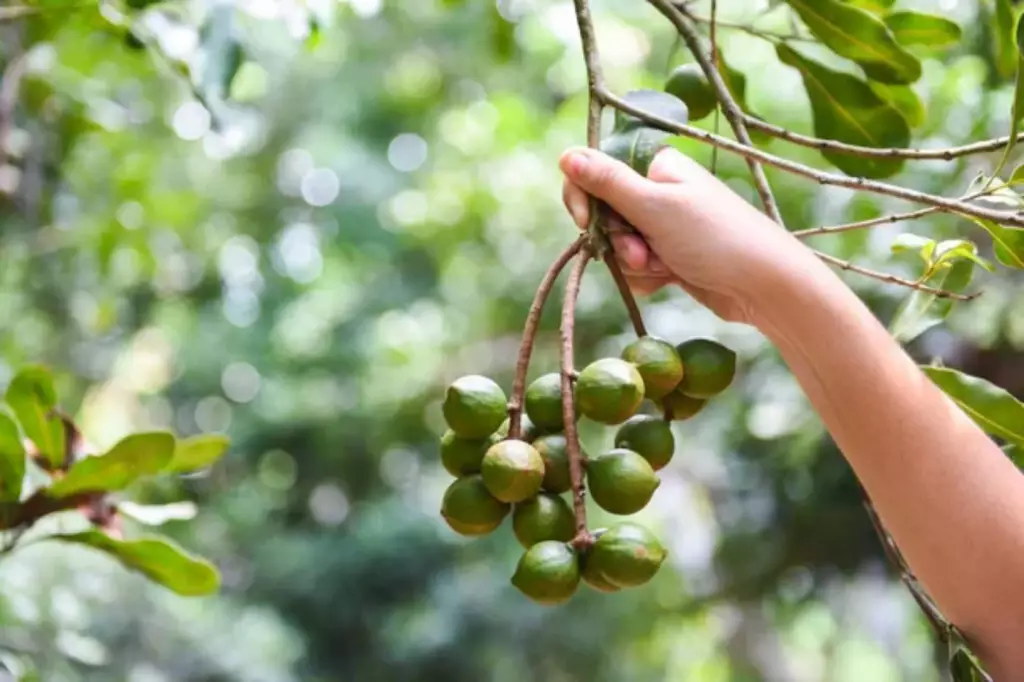
With a well-established root system and canopy, the tree is better equipped to support the production of flowers and subsequent fruit. This transition often leads to an increased flowering set, resulting in a higher potential for fruit production.
Furthermore, mature trees are generally more reliable in their flowering patterns, whereas younger trees may exhibit more variability in their flowering set due to factors such as environmental conditions and tree health.
